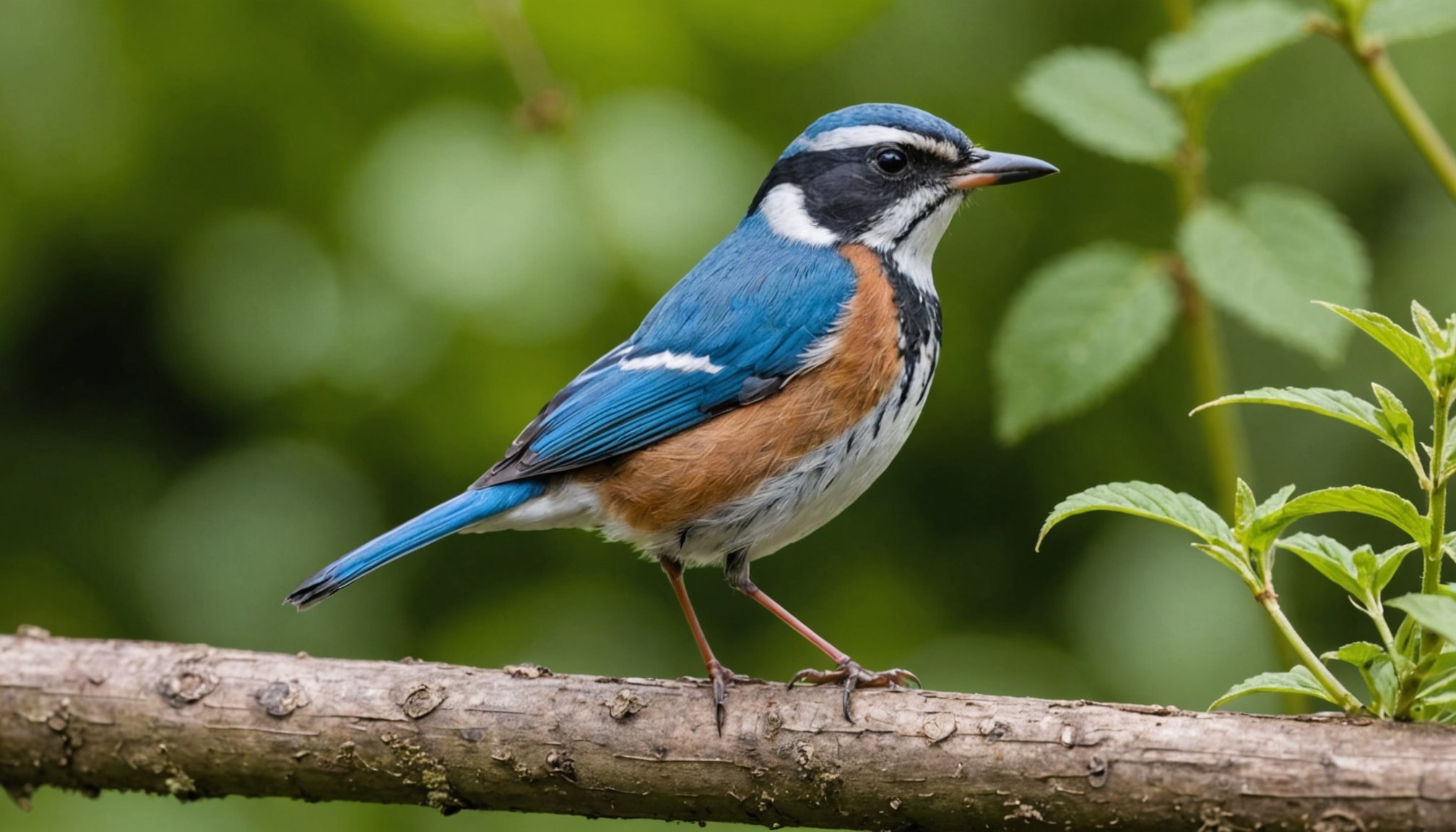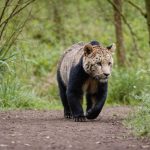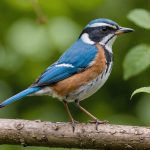Understanding the Importance of Wildlife in Your Garden
Wildlife plays a crucial role in enhancing garden ecology. Birds and small mammals, such as squirrels and hedgehogs, are instrumental in maintaining the balance within gardens. Birds assist in pollination and pest control by consuming insects, while small mammals contribute by aerating the soil as they dig.
The presence of various species in a garden promotes biodiversity, which brings numerous wildlife benefits. In urban and suburban areas, this biodiversity can significantly impact the quality of life by providing a natural space that reduces stress and increases ecological awareness.
In the same genre : Fostering biodiversity: innovative approaches to wildlife conservation in uk urban housing developments
Ecosystem services provided by wildlife include nutrient cycling and supporting plant growth through seed dispersal. For instance, pollinators like bees and butterflies are responsible for the reproduction of many flowering plants. Additionally, birds help control pest populations by feeding on insects, which decreases the reliance on chemical pesticides.
Promoting and preserving biodiversity can transform a garden into a thriving ecosystem. This not only supports local wildlife but also offers educational opportunities to learn about ecological interactions. By fostering garden ecology, individuals can actively contribute to broader conservation efforts and enhance the environmental benefits of their personal spaces.
Also to read : Key strategies for ensuring safety during animal escapes at uk wildlife parks
Designing a Wildlife-Friendly Landscape
Designing a wildlife-friendly landscape goes beyond aesthetics; it supports biodiversity and maintains wildlife habitats. Integrating native plants enhances garden design by providing essentials for local species—food, shelter, and nesting sites. Native plants are crucial since they are adapted to local climate and soil conditions, requiring less maintenance and resources.
Creating diverse habitats through varying plant heights offers different ecological niches. Tall trees can serve as perches for birds, while shrubs and ground cover support small mammals and insects. Incorporating various layers of vegetation encourages a rich tapestry of wildlife, each layer offering specialised homes and food sources.
Water features, such as ponds or birdbaths, are vital. They offer hydration and bathing opportunities for diverse species. Birds, in particular, frequent these water sources, which also attract amphibians and other wildlife, enriching your garden’s ecosystem services.
By embracing native plant selection, layered vegetation, and water features, a wildlife-friendly landscape is achieved. This not only supports biodiversity in urban areas but also brings wildlife benefits that contribute positively to the surrounding environment, enhancing garden ecology. Encouraging local wildlife makes personal spaces invaluable assets in broader conservation efforts.
Providing Food Sources
Creating a garden that caters to wildlife demands careful consideration of wildlife feeding processes. Different bird species thrive on specific dietary needs, prompting the need for diverse food offerings. Berries and seeds, natural to the environment, not only fulfil this nutritional requirement but also play a strategic role in reducing pest populations by attracting insect-eating birds. Establishing natural food sources becomes crucial to sustaining a self-reliant garden ecosystem.
Bird feeders play a vital role in this ecosystem. They allow close interaction with various species, boosting bird populations and enhancing the garden’s vitality. Strategic placement of bird feeders is essential. They should be positioned away from predators and reachable to birds, considering height and proximity to cover. This thoughtful set-up promotes a safe haven for avian visitors.
Beyond the artificial structures, it’s vital to integrate natural food sources like nectar-rich flowers and plants bearing nuts. Such resources offer sustenance to a range of wildlife including smaller mammals like squirrels. By thoughtfully integrating wildlife feeding through a mix of natural and added food sources, gardens can achieve a rich tapestry of biodiversity, providing an impactful, thriving habitat.
Creating Shelter and Nesting Sites
To nurture a vibrant ecosystem, providing ample wildlife shelter is essential. Natural elements such as shrubs and trees offer crucial cover that furnishes protection from predators and harsh weather conditions. These structures also serve as critical habitats for various fauna, delivering safe spaces where birds can nest and mammals can seek refuge.
Nesting opportunities abound with thoughtful incorporation of structures like birdhouses and insect hotels. Birdhouses should mimic natural nesting preferences in size and placement for different species, boosting occupancy rates. This not only heightens bird presence but enhances garden ecology. Similarly, insect hotels attract beneficial insects, playing pivotal roles in pollination and pest control.
In addition, implementing brush piles and rock features significantly benefits small mammals and reptiles needing shelter. Brush piles provide a reassuring environment where critters may hide and thrive, while rock features offer warmth and protection against weather changes.
By creatively integrating these garden structures, a multifaceted wildlife habitat emerges, catering to diverse species’ shelter and nesting needs. Such designs ensure that gardens not only support but actively enrich biodiversity, contributing positively to broader ecosystem services and conservation efforts.
Maintenance for a Wildlife-Friendly Environment
Maintaining a wildlife-friendly environment requires thoughtful garden maintenance practices that promote sustainability and safety. It’s crucial to adopt sustainable gardening methods that minimise harm to the ecosystem.
Begin by choosing organic gardening techniques, such as using compost to enhance soil fertility, which reduces the need for chemical fertilisers. Avoid pesticides. Instead, rely on natural predators and beneficial insects as an eco-friendly solution to pest control challenges. This approach aids in maintaining a balanced ecosystem where each species plays a part without artificial interference.
Seasonal maintenance is vital for the well-being of wildlife habitats. During autumn, leave fallen leaves as they offer habitats for insects, which in turn provide food for birds. In winter, consider providing extra food sources, as natural supplies may diminish. Ensure water features are kept ice-free to support wildlife hydration.
Regular pruning and trimming of plants encourage healthy growth, providing robust shelter and nesting sites. Always conduct these tasks during non-breeding seasons to avoid disturbing active nests. By integrating these practices, you create a safe haven for wildlife, fostering an environment that thrives on and supports biodiversity.
Monitoring and Encouraging Wildlife Activity
Engaging in wildlife observation enriches the experience of having a garden while promoting garden health. Not only does this activity enhance enjoyment, but it also deepens understanding of local fauna. Begin with simple tools like binoculars or a camera to spot and identify regular visitors. Familiarising yourself with their patterns provides insights into the ecosystem.
Creating a wildlife journal proves invaluable in tracking species interactions and behaviour over time. Documenting these activities can help identify trends or changes, offering a dynamic view of biodiversity. Recording observations such as nesting, feeding, and breeding patterns supports ongoing learning and adaptation of garden practices to improve wildlife support.
Encouraging family participation in these activities can inspire a shared commitment to wildlife-friendly gardening efforts. Involvement fosters appreciation for nature and reinforces the importance of conservation. Activities like birdwatching can be educational, promoting curiosity and understanding among children and adults alike.
To promote engagement, consider hosting a family wildlife watching day, complete with guides to identify various species. By nurturing a passion for observing wildlife, your family collectively contributes to enhancing and conserving garden biodiversity. Embrace these activities as a meaningful way to connect with nature and support a thriving ecosystem.
The Ecological Impact of Your Wildlife Garden
Personal wildlife gardens have profound environmental benefits, extending their reach from individual backyards to broader urban landscapes. Such gardens act as green oases, supporting a myriad of species and enhancing urban biodiversity. By integrating native plants and providing habitats like ponds and bird feeders, wildlife gardens contribute significantly to local wildlife conservation efforts.
Urban gardens are vital in creating corridors for wildlife, bridging fragmented habitats and promoting ecological connections. This not only helps local species thrive but also fosters a sense of ecological awareness among community members. When individuals engage with their local environment, they gain a greater appreciation for the delicate balance in ecosystems.
Moreover, these gardens serve as living classrooms, educating communities about the importance of conserving native species and sustainable practices. Through workshops or guided garden tours, individuals can learn about the interconnectedness of species and the benefits of supporting local ecosystems.
In essence, cultivating a wildlife-friendly garden transforms private spaces into public assets. By encouraging small-scale conservation actions, these gardens inspire community-driven initiatives, promoting wildlife conservation and ensuring that urban areas contribute positively to the environment and biodiversity.











